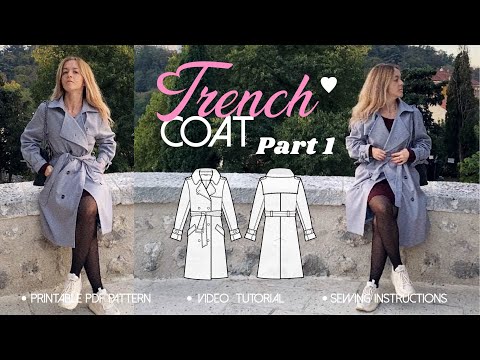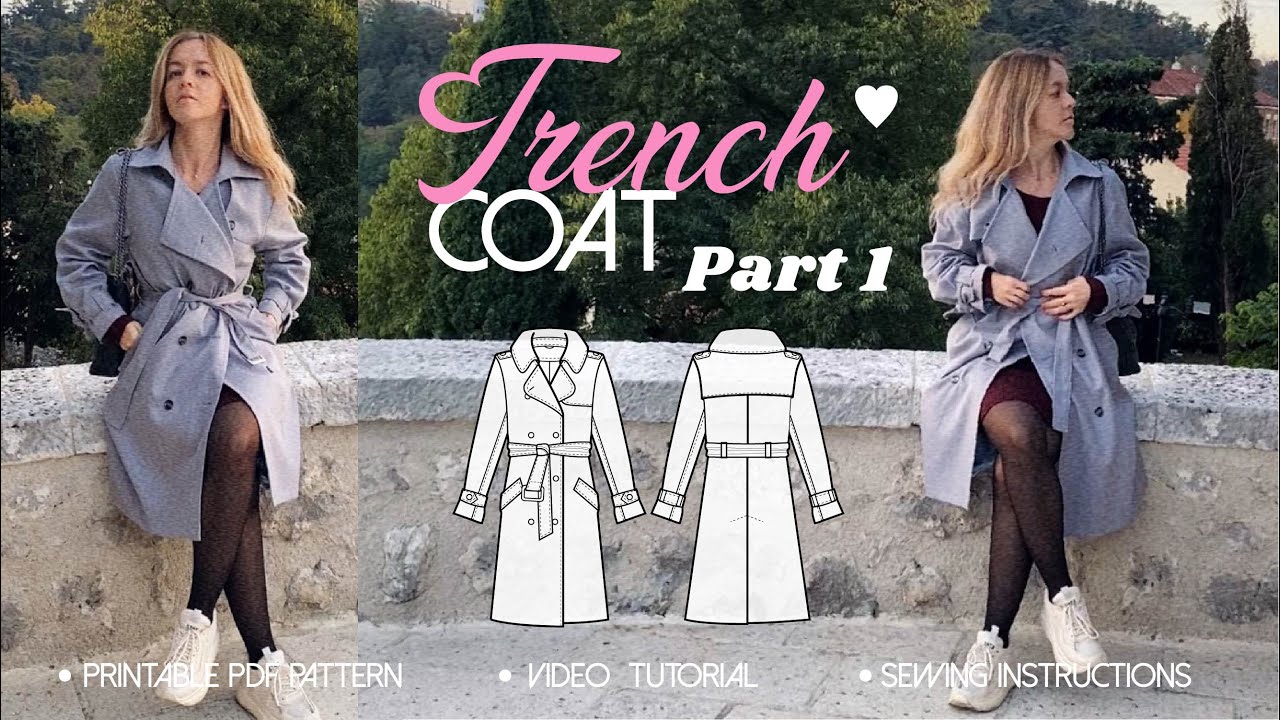The trench coat fabric is a true marvel of textile engineering. Crafted with meticulous attention to detail, this fabric combines sophistication, durability, and versatility in a single garment. Its impeccable craftsmanship ensures that it withstands the test of time, making it a timeless investment for any wardrobe. The premium materials used in its construction offer a luxurious feel against the skin, while also providing excellent protection from the elements. Whether you’re strolling through a rainy cityscape or braving a chilly day, this fabric’s water-resistant properties keep you dry and comfortable. Furthermore, its breathability allows for optimum airflow, preventing overheating without compromising on warmth.
In addition to its practicality, the trench coat fabric exudes an undeniable aura of elegance. Its sleek and smooth texture adds a touch of sophistication to any outfit, effortlessly elevating your style. Its versatility knows no bounds, seamlessly transitioning from a casual ensemble to a formal attire, making it suitable for any occasion. Embrace the timeless charm of the trench coat fabric and experience the perfect balance between fashion and functionality. Prepare to turn heads with your impeccable taste and embrace the enduring appeal of this iconic fabric.

The Versatile Trench Coat Fabric: A Closer Look
When it comes to timeless fashion, few garments can rival the classic trench coat. Originally designed for military use, this iconic piece has since become a staple in wardrobes around the world. One of the key factors that contribute to the trench coat’s enduring popularity is the fabric it is made from. Let’s dive into the world of trench coat fabrics and discover what makes them so special.
1. Cotton Gabardine: The Original Trench Coat Fabric
Cotton Gabardine is the traditional fabric used in the production of trench coats. Invented by Thomas Burberry in the late 19th century, this tightly woven fabric is known for its durability, breathability, and water resistance. The unique twill weave and compact structure of cotton gabardine make it an ideal choice for creating a structured and polished look.
Thanks to its ability to repel water, cotton gabardine provides excellent protection against rain and wind. This makes it an excellent choice for outerwear, especially during transitional seasons. Additionally, the breathable nature of this fabric ensures that the wearer remains comfortable even in milder temperatures.
2. Wool: The Cozy Classic
Wool is another popular fabric choice for trench coats, particularly in colder climates. Known for its insulating properties, wool provides exceptional warmth and comfort during chilly days. Trench coats made from wool are often lined with satin or silk to enhance their luxurious feel.
While wool may not offer the same level of water resistance as cotton gabardine, it is still relatively water repellent and can withstand light rain. Additionally, wool is highly durable and resistant to wrinkling, making it an excellent investment for those seeking a long-lasting trench coat.
3. Polyester Blends: The Modern Twist
In recent years, polyester blends have become increasingly popular in the production of trench coats. These blends combine the benefits of various fabrics to create a versatile and functional garment. Polyester, a synthetic fabric known for its durability and wrinkle resistance, is often blended with natural fibers like cotton or wool to enhance comfort and breathability.
Trench coats made from polyester blends are typically more affordable than those made from pure wool or cotton gabardine. They also tend to be easier to care for, as they can often be machine-washed and require minimal ironing. While they may not offer the same level of water resistance as traditional fabrics, polyester blends are still a practical choice for everyday wear.
4. Leather: The Edgy Alternative
For those looking to make a bold fashion statement, leather trench coats are an excellent choice. Leather is a durable and luxurious material that adds a touch of edginess to any outfit. While not as versatile as other fabrics, leather trench coats are perfect for adding a rebellious flair to a casual or evening ensemble.
It’s important to note that leather trench coats require special care to maintain their appearance and longevity. Regular conditioning and protection from moisture are essential to preserve the leather’s suppleness and prevent cracking.
5. Technical Fabrics: The Functional Innovations
Technical fabrics are a relatively new addition to the world of trench coat materials. These cutting-edge textiles are designed to offer enhanced performance and functionality. They often feature advanced features such as water resistance, breathability, and even temperature regulation.
Technical fabrics are particularly popular among those who lead active lifestyles or live in regions with unpredictable weather conditions. Trench coats made from technical fabrics are lightweight, flexible, and offer excellent protection against the elements.
In Conclusion
Trench coat fabrics come in a variety of options, each with its own unique characteristics. Whether you prefer the timeless elegance of cotton gabardine, the cozy warmth of wool, the affordability of polyester blends, the edginess of leather, or the functionality of technical fabrics, there is a trench coat fabric that suits your personal style and needs.
Regardless of the fabric you choose, investing in a high-quality trench coat is always a wise decision. With proper care, a well-made trench coat can withstand the test of time and remain a stylish and reliable companion for years to come.
“Stylish Trench Coat: DIY Sewing Tutorial & Patterns for Fashion Enthusiasts”
Video Source : Sveta Dressmaker
Trench Coat Fabric:
Trench Coat Fabric
| Fabric Type | Description | Characteristics |
|---|---|---|
| Gabardine | Gabardine is a tightly woven fabric made from worsted wool or cotton, known for its durability and resistance to wind and rain. | Waterproof, wind-resistant, breathable, lightweight, and wrinkle-resistant. |
| Cotton Twill | Cotton twill is a sturdy fabric with a distinct diagonal pattern, commonly made from cotton or a blend of natural and synthetic fibers. | Durable, breathable, comfortable, and provides good insulation. |
| Waxed Cotton | Waxed cotton is a traditional fabric treated with wax to enhance its water resistance and durability. | Water repellent, windproof, breathable, and develops a unique patina over time. |
| Leather | Leather is a natural material made from animal hides, commonly used in high-quality trench coats for its luxurious feel and timeless appeal. | Durable, insulating, windproof, water repellent (with proper treatment), and ages beautifully. |
| Microfiber | Microfiber is a synthetic fabric with extremely fine fibers, designed to mimic the softness and breathability of natural materials. | Lightweight, water repellent, quick-drying, wrinkle-resistant, and easy to care for. |
As an expert in trench coat fabrics, it is important to understand the various options available to ensure the perfect combination of style, functionality, and comfort. The table above provides a comprehensive overview of different trench coat fabrics, highlighting their unique characteristics.
Gabardine, known for its longevity and weather resistance, offers a blend of practicality and refinement. Its ability to repel water and wind, while remaining lightweight and breathable, makes it a staple choice for any trench coat connoisseur.
Cotton twill, with its distinctive diagonal weave, is a durable and comfortable fabric that provides excellent insulation. Its breathability and resilience make it an ideal choice for those seeking a versatile trench coat for various weather conditions.
For those who appreciate the classics, waxed cotton offers a traditional yet functional option. Treated with wax, this fabric becomes water repellent and windproof, ensuring optimal protection from the elements. Over time, waxed cotton develops a charming patina that adds character to the garment.
Leather, a timeless material, exudes luxury and elegance. Renowned for its durability and insulating properties, leather trench coats provide exceptional comfort and style. With proper treatment, leather can also repel water, making it a reliable choice for those seeking a sophisticated yet resilient outerwear option.
Finally, microfiber fabrics offer a modern twist on trench coat materials. Utilizing advanced synthetic fibers, microfiber provides a lightweight, water-repellent, and quick-drying alternative. Its wrinkle resistance and easy care make it a practical choice for those with an active lifestyle.
In conclusion, the choice of trench coat fabric depends on personal preferences and the desired balance between style and functionality. Understanding the unique characteristics of each fabric type allows individuals to make informed decisions when selecting their perfect trench coat.

